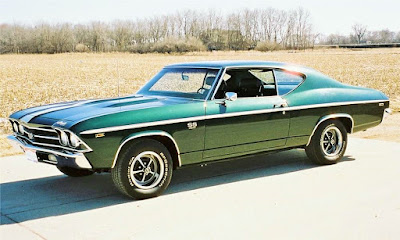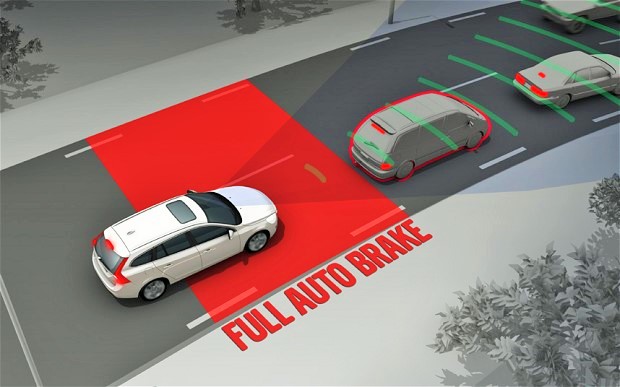Greetings Again!
Some time has passed since we last talked cars extremely in-depth together, however that certainly doesn't mean that Adam's Autos hasn't been following the latest industry developments! Today, we'll take a look at some of the latest developments from all around the auto industry. A couple auto shows recently took place, which of course means that some new models have been revealed.
2016 New York International Auto Show
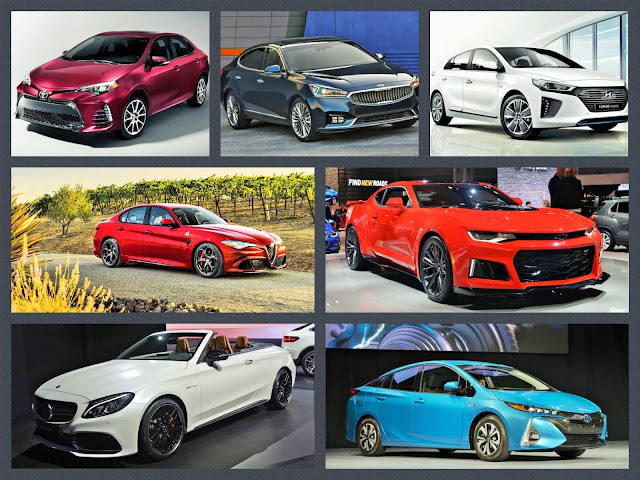 |
| From top left to right: The 2017 Toyota Corolla 50th Anniversary Edition, Kia Cadenza, Hyundai Ioniq, Alfa Romeo Giulia, Chevrolet Camaro ZL1, Mercedes-AMG C63 Cabriolet, and the Toyota Prius Prime. |
Recently taking place was the 2016 New York International Auto Show, and we saw a plethora of new and refreshed models unveiled! From Kia, to Scion, to Audi, to Mercedes-Benz, there was something new from nearly every automaker. Here's something about a few of the notable models that were displayed:
- 2017 Alfa Romeo Giulia: Who doesn't like the idea of a sports sedan? Even better, who can't appreciate the proper reintroduction of a nameplate? With 2017 coming up quick, we are seeing the Alfa Romeo brand reenter into the United States marketplace with the smaller Giulia sports sedan. The Giulia will come with a 2.0 liter engine in all trim levels that's good for 276 horsepower and 295 lbs-feet of torque paired to an 8-speed automatic transmission. In order to attract buyers, expect Alfa Romeo to point out features such as the Giulia's carbon-fiber drive shaft and 50/50 weight distribution, which lend some credence to the Giulia's intended performance roots. Roughly the size of a BMW 3-Series, expect the Giulia to start in the upper-$30,000 range, although pricing hasn't been announced officially yet. Based on initial impressions, the car's interior will be just as high quality as competitor's interiors, and much of the latest safety and in-car connectivity features will likely be standard or available too given the Giulia's luxury intentions.
- 2017 Mercedes-AMG C63 Cabriolet: Like convertibles and have $75,000+ to blow? The Mercedes-AMG C63 may just be for you! Similar to the recently released C63 coupe, the convertible receives some suspension and body alterations to make it more unique. Both the coupe and the convertible share a 4.0 liter V8 engine with two turbochargers. Its good for 469 horsepower in the regular Cabriolet, and 503 in the Cabriolet S. 0-60 should happen in just about 4 seconds, and top speed ranges from 155 to 174 MPH depending on whether or not you have the Cabriolet or Cabriolet S model.
- 2017 Kia Cadenza: What? A redesign already? Yes sir, the 2017 Kia Cadenza is redesigned, just three years after being introduced as an all-new model. The 2017 Cadenza will continue to be a large, front-wheel drive sedan with V6 power. Although now, it uses an 8-speed automatic transmission developed by Kia and features a slew of new available safety and technology features, such as advanced smart cruise control with stop-and-go capability. The familiar 3.3 liter engine previously offered is revised this time around for better fuel economy ratings and also performance with the new 8-speed transmission. Pricing as of the auto show was still an unknown (and still is an unknown now too). However, Kia primarily positions the Cadenza to compete with cars such as the Buick LaCrosse, Toyota Avalon, and Lexus ES, meaning its price will likely range from the lower $30,000 mark to the upper $40,000 mark, much like its competition. Other interesting notes are that the Cadenza will be lighter than the previous model, yet 35% stiffer overall due to wise use of materials. This should bode well for driving dynamics and greatly reduced levels of noise, vibration, and harshness (NVH) for sure. Kia has been on a huge roll lately, no doubt. And I've been finding myself becoming more and more of a fan of theirs.
- 2017 Chevrolet Camaro ZL1: Perhaps being one of the biggest showstoppers out of all of the new models introduced so far this year, the new Camaro ZL1 packs a whopping 640 horsepower... Excuse me: SUPERCHARGED horsepower, and 640 lbs-feet of torque through a 6.2 liter V8 engine. This is the same engine that's found in the Corvette Z06 for proper comparison, and in the current Camaro, that's an increase of 60 horsepower compared to the last Camaro ZL1. Factor in the fact that the new ZL1 also weighs 200 pounds less than its predecessor, and its 4.1 second 0-60 time and 12.4 second quarter-mile time should surprise nobody. Two of the most notable aspects of this new Camaro, however, are that it shares its platform with the Cadillac ATS and CTS now (the Alpha platform, which is now proven to have lethal agility), and the 2017 ZL1 will also come standard with a 6-speed manual OR a new 10-speed automatic transmission co-developed with long-time rival Ford. Paddle shifters, Brembo brakes (of the non-carbon ceramic variety), several modern safety, tech and performance features, and a slew more will all be standard. This new 2017 ZL1 will likely have a starting price above $60,000. That price will get you plenty of looks and performance! Although, the new 10-speed won't be available until roughly 2018. But word is, it'll be installed in more models other than just the Camaro. Hmmm, 10-speed V-series Caddies anyone? MMMMM... Yes, please! Oh, and if I didn't say the word Camaro enough here... CAMARO.
- 2017 Hyundai Ioniq: Behold, Hyundai's response to the Toyota Prius. I establish this from the get go because that's exactly what this car is, and you'll see why. The Ioniq will be available in three different flavors: hybrid, Plug-In Hybrid, and a pure electric version. Both the hybrid and the plug-in hybrid use Hyundai's new 1.6 liter four-cylinder that's direct injected and produces 104 horsepower and 109 lbs-feet of torque. The hybrid's permanent-magnet AC motor produces 43 horsepower and its 1.6 kWh lithium-ion-polymer battery is mounted under the rear seat. The plug-in has a stronger 60 horsepower electric motor mounted mated to a bigger 8.9 kWh battery. Both the hybrid and plug-in hybrid come standard with dual-clutch transmissions. The electric Ioniq does away with gasoline engines entirely (obviously) and uses a single 120 horsepower motor tied to the front wheels and a single-speed direct-drive gear. It gets a 28 kWh battery which is estimated to have a range of 110 miles. A 100-kW fast charger can recharge the Ioniq's battery to 80% full in about 20 minutes. Something the Ioniq has going for it is more conventional styling inside and out compared to its Prius rival, and all of the latest gizmos and gadgets, including Android Auto and Apple CarPlay connectivity. So can the Ioniq snatch some momentum away from the king of hybrids, the Prius? We shall see soon enough. They're very similar in what they each offer customers for sure.
- 2017 Toyota Prius Prime: Regardless of how you think the newly redesigned Prius looks, its hard to deny that its the mark to beat in the hybrid market. Thus, looking to further solidify their lead in the segment, Toyota is introducing a Prius plug-in model, dubbed the Prime. It will come equipped with a 1.8 liter Atkinson cycle four-cylinder engine paired to a planetary-gear continuously variable transmission (CVT) and a 8.8 kWh lithium-ion battery. Toyota projects a combined 120 MPGe rating and a top speed of 84 MPH in EV mode. Driving range will be around 600 miles on a full charge and a full tank, which will hold 11.3 gallons of fuel. The Prius Prime can be charged in 5.5 hours on a standard household outlet, and in half that time if hooked to a 240-volt outlet. I'm sure Optimus Prime approves. Well... At least of the name.
- 2017 Toyota Corolla: Always residing a little bit more on the "bland" side, an interesting styling refresh and some content shuffling is in order for the entire Corolla lineup for the 2017 model year. Toyota's Corolla also marks time with a special 50th anniversary edition model that's dropping as well. Black Cherry with black and black cherry interior accents will be an exclusive color to the 50th anniversary models. Toyota has sold about 43.1 million Corollas worldwide since 1966, and sales are still going strong.
Toyota & Scion: Playing the Naming Game
 |
| The Scion iM (bottom) and iA (top left) will continue on under the Toyota brand. But its adios to the the tC (top right). However, you can't say it hasn't had a good run or isn't getting a decent send off with its Release Series 10.0 model. |
In a follow up to one my last posts (Another One Bites the Dust), its now probably no secret that Toyota's youthful, ill-fated Scion brand will be fading into the sunset at the end of the 2016 model year. While this may be a disappointment to some, those same individuals may be delighted to know that Scion's models will transition into Toyota's 2017 lineup! Well, some of them at least...
The tC coupe, currently the longest-running Scion model, will be discontinued after the 2016 model year alongside the brand name. However, we can expect to see a Release Series 10.0 model go on sale before the tC's final curtain call comes. I've always liked the styling of the tC, so it is somewhat sad to see it go. But at least Scion is giving it a decent send-off.
 |
| The Toyota 86 essentially picks up where the Scion FR-S will leave off. |
As for the other remaining Scion models, the new iM hatchback will soon be known as the new Toyota Corolla iM hatchback and the equally new Scion iA sedan will become the Toyota Yaris iA sedan. The Scion FR-S will become the Toyota 86, which is already an established nameplate and sports car in other markets globally, such as Asia and South America. The iM and iA will be identical to their Scion versions, meaning aside from new Toyota badges, exterior, interior, and engine and transmission arrangements will be largely the same. The iM comes standard with a 1.8-liter four-cylinder engine mated to a 6-speed manual or CVT (continuously variable) transmission, while the iA comes standard with a 1.5-liter four-cylinder engine paired to a 6-speed manual or 6-speed automatic transmission. The new 86, however, will receive some performance upgrades which include slightly more horsepower and lbs.-feet of torque (205 and 156 respectively; but for manual transmission models only, however). Slightly revised transmission gearing and interior and exterior styling is also in order.
While I do understand the marketing logic behind naming the iM and iA after existing Toyota models since it may boost each model's popularity (and thus sales), I can't help but think that both (more specifically the iM) could benefit from being renamed after past Toyota models as well. The iM was just SCREAMING in my mind to be renamed the Toyota Matrix, which if you remember was a hatchback model made from 2003-2012. Now granted, it was never a huge seller in later years for Toyota, but it seemed so appropriate. Similarly, the new 86 could've also been called the Celica, but yet the 86 name may resonate more with Toyota performance aficionados. Regardless of their names, its good to see these relatively fresh models get new life within Toyota's new car lineup. It'll be interesting to see if badge engineering will still work as effectively as it did 10 years ago, or if these once-vulnerable models will continue to remain obscure to buyers.
Automakers Agree to Make Autonomous Braking Standard By 2022
Recently, the U.S. Department of Transportation (DOT) and the Insurance Institute for Highway Safety (IIHS) compelled a large group of automakers to commit to making autonomous braking standard by the 2022 model year. This is a significant development, since every year that passes brings new technology that propels us closer and closer to the days where cars drive themselves.
Many people express some concern over the thought of having fully autonomous cars on the road in the future, and rightfully so. Because after all, the best way to drive safely is not to have the car do it for you (since they can be prone to failure too, i.e. Google's recent accident), but to rather simply to pay attention wherever you're headed! But with this sort of informal agreement taking place, just imagine the the friendly competition that will now begin to take place among the various automakers to be the first to have all of their models fully equipped with this sort of technology first. The DOT notes this, saying that the expected results of this agreement should be in place three years sooner than if formal agreements or policies were made. All in all, I say jolly good show to the DOT and IIHS! I tip my hat to their tenacity.
Its estimated that automatic emergency braking technology could prevent as many as 28,000 crashes and 12,000 injuries in the previously mentioned three year time frame.
...Now, for those of you unfamiliar with exactly what this sort of technology is: Automatic braking technology is a feature that can either slow down or fully stop a moving car if it senses the vehicle is about to strike something ahead of it, such as a pedestrian or another car. Systems that fully stop a car are called "full range" systems. These sort of technologies are often seen paired with other modern technologies such as adaptive cruise control and blind-spot monitoring. Volvo is currently the only automaker that offers this automatic braking technology as standard equipment on all of their cars. No surprise, given that Volvo is known for their commitment to safety.
Here's the list of automakers that gave their word to work towards this goal: Audi, BMW, Ford, General Motors, Mazda, Mercedes-Benz, Tesla, Toyota, Volkswagen, Volvo, Land Rover, Fiat Chrysler, Honda, Hyundai, Jaguar, Kia, Maserati, Mitsubishi, Nissan, Porsche, and Subaru
BMW Will Build an X7 Crossover, More Performance Vehicles
 |
| The current 2016 BMW X5 SUV. |
BMW has recently stated that they will begin to build a three-row crossover X7 SUV. On top of this, they have also said they plan to expand their performance lineup of 'M' vehicles to include more of their crossover vehicles. This news honestly doesn't surprise me very much, especially given the popularity of the luxury crossover SUV segment these days.
For the last decade or so now, BMW has ventured away from their "ultimate driving machine" roots in many ways in order to appeal to more of the mass market. Although their pricing structure may hint at otherwise, focusing on the mass market and producing what's in demand is the best way to remain profitable post-recession days. And also given that there are still some people out there that like performance (and the fact that key competitors Mercedes-Benz and Cadillac offer their AMG and V-series branded vehicles, respectively), producing performance variants of these same crossovers we'll see coming to market alongside some of their existing models only adds up to even more cents. At the potential expense of the image of BMW's 'M' performance line. Time will tell, its too early to speculate given that these models aren't even out yet.
Either way, expect to pay a pretty penny for such power and prestige.
Coming to America? The Audi A5 Sportback
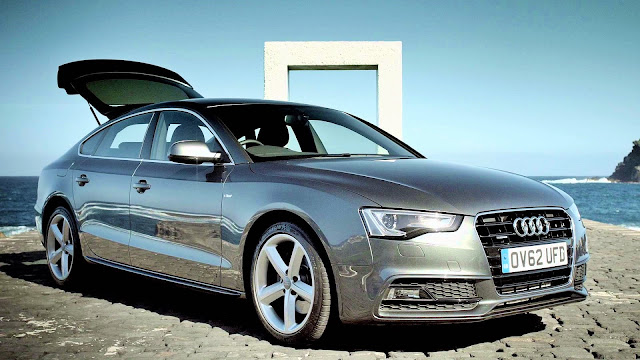 |
| While station wagons may not be the rave that they used to be in the United States, hatchbacks have been more popular as of late. So much so until many new sedans are even beginning to adapt hatchback-like styling. Thus, enter the Audi A5 Sportback. |
A redesigned A5 is on the way soon, and Audi has a surprise up their sleeve for us. Arriving in 2017, the new A5 is scheduled to receive a third bodystyle. It only makes sense that this new style is the Sportback model pictured above, as we already have a coupe and convertible A5 on sale here in the United States, and its the only other style on sale in Europe. This move also makes practical marketing sense too, given that Audi is in need of a more direct competitor to the BMW 4 Series Gran Coupe.
The increased practicality of a hatchback over that of a coupe or convertible will be a strong selling point for growing upper middle class families that want to travel in a little more style and comfort. Additionally, given Audi's recent high marks in reliability from Consumer Reports, it seems as if the A5 Sportback is poised to potentially take a little chunk out of the 4 Series' sales. We shall see when this new model drops next year.
The Maserati Levante: There's a First Time For Everything
Essentially every luxury brand these days is trying to compete across every category possible, including the mid-sized SUV category. The one exception is Ferrari, who said they will never produce anything other than high-performance, exclusive coupes and sports cars. We'll see how long that lasts. Maserati has decided that its time to throw their hat in the ring, and thus their long-awaited, long-discussed Levante SUV enters the fray. They proudly proclaim that the Levante is the "Maserati of SUVs", which makes perfect sense and I hope for their namesake it truly is.
So What's the Deal?
The Levante has more or less been in incubation in some way, shape, or form, for the better part of 13 years. Or at least that's how long Maserati has been talking about bringing an SUV to their lineup and the time that's passed since we saw the Kubang concept car. So Maserati has had plenty of time to sit back, observe the waters, and develop their own product. Without a doubt, the Levante is all Maserati, from its grille, to its three point silver trident on the front, to its sporty and luxurious interior and driving dynamics. This shouldn't necessarily be a surprise, due to the fact that this SUV rides on nearly the same platform as the Ghibli sedan. According to Car and Driver, the Levante feels just like your conventional Maserati: its fast, loud, and agile. Even more agile than the smaller Ghibli sedan.
Dynamic Dynamics
Under the hood, the Levante uses the Ghibli's 3.0 liter twin-turbo V6 engine, but is available with two different horsepower ratings. The base model starts at about $72,000 and makes 345 horsepower, where the uplevel S models make 424 horsepower and is priced from $83,000. The Levante S is actually even stronger (approximately 20 horsepower stronger) than the Ghibli S due to intake, exaust, and other performance tweaks. The throttle response in the Levante is said to feel better as a result of those improvements, too. 0-60 happens in the 5 to 6 second range, depending on the model. A 3.0 diesel engine is available, but not planned for the U.S. market, and prototype models have been built using the Quattroporte's 3.8 liter 523 horsepower V8, but this engine isn't planned for production in the Levante either. However, a 560 horsepower V8 is rumored to be planned for the 2018 model year. Now THAT will be an interesting addition. All Levantes will come with a ZF 8-speed automatic transmission, and Maserati's signature Italian engine roar. Speaking from experience of seeing exchange students drive Maseratis all over Michigan State University's campus, that sound is truly music to the ears.
Its What's On the Inside
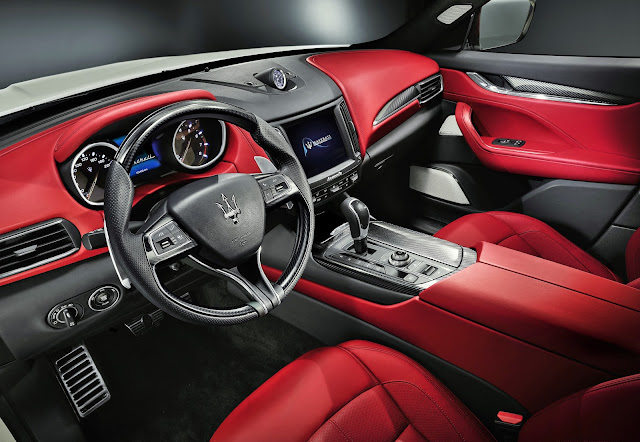
Further underneath all the metal lies the Levante's conventional hydraulic power steering system. This is crucial for a vehicle seeking to set the new standard for all mid-sized luxury SUVs, as hydraulic power steering systems typically provide more steering feel than their electric power steering counterparts. My current everyday car has hydraulic power steering, and while it may be considered old school technology nowadays, it does offer more of a hefty feel and feeling of connection to the road. Car and Driver reports that the Levante is easy to maneuver in tighter areas, and its suspension has standard air springs paired with electronically controlled dampers. This allows this SUV to have several different ride-height settings and two distinct off-road modes, even though only 1% of Maserati owners ever even go off-road according to the company. The ride is reportedly smooth enough, even with the largest 20 inch wheels available, but the car is no cloud. Although, the seats were designed to be more comfortable than those in the Ghibli, which is a reported sour spot of that model. Leather everywhere, real wood and metal, and French stitching also impart a greater sense of opulence on the inside as well. The large touchscreen infotainment system will look familiar to many and should be easy to learn, as it takes its overall design from Chrysler's UConnect system (Maserati is owned by FIAT-Chrysler after all).
Coming Soon and Very Soon
Maserati is taking a risk by jumping into a market in which they've never been in before. However, exiting your comfort zone is an excellent way to grow, and nearly every other similar automaker has been a newcomer in this competitive midsize luxury SUV segment at some point. Now that its Maserati's turn to step up to the plate, can their new SUV get a piece of the coveted sales pie? Maserati expects to sell roughly 30,000 units yearly, which is reasonable given Maserati's exclusivity and the Levante's price point. What remains a question is how reliable will this product be (FIAT-Chrysler has been struggling in that arena lately), and also how it will compare head-to-head with competition such as the Porsche Cayenne and BMW X5? As always, time will tell. I'm looking forward to seeing one in person myself soon! Expect the Levante to arrive at dealers any day. It'll be produced in Turin (Italy).
So what are your initial impressions? Don't forget to comment and let your opinion be heard. On ALL of the articles featured above!
ROLL ON READERS!
Copyright © 2016 Adam's Autos, All Rights Reserved.

